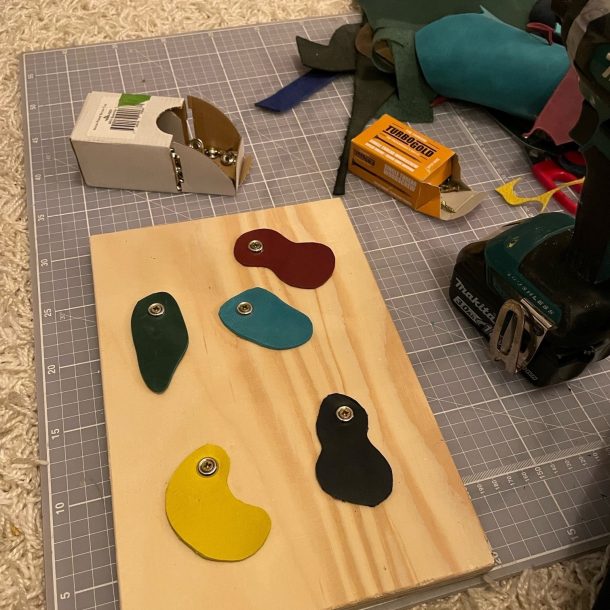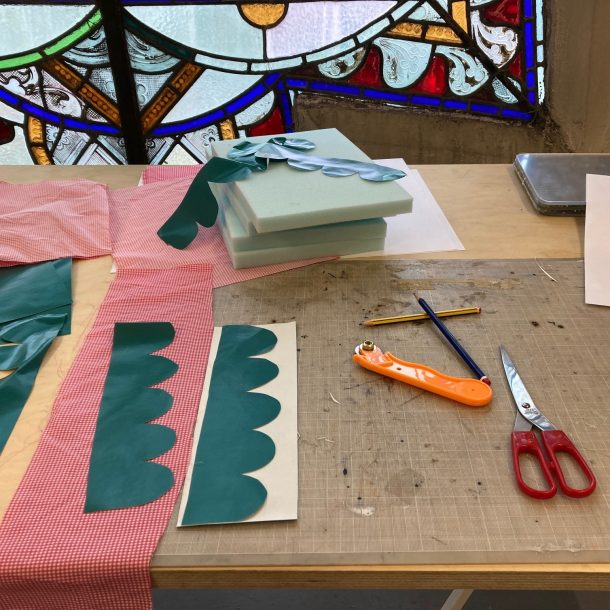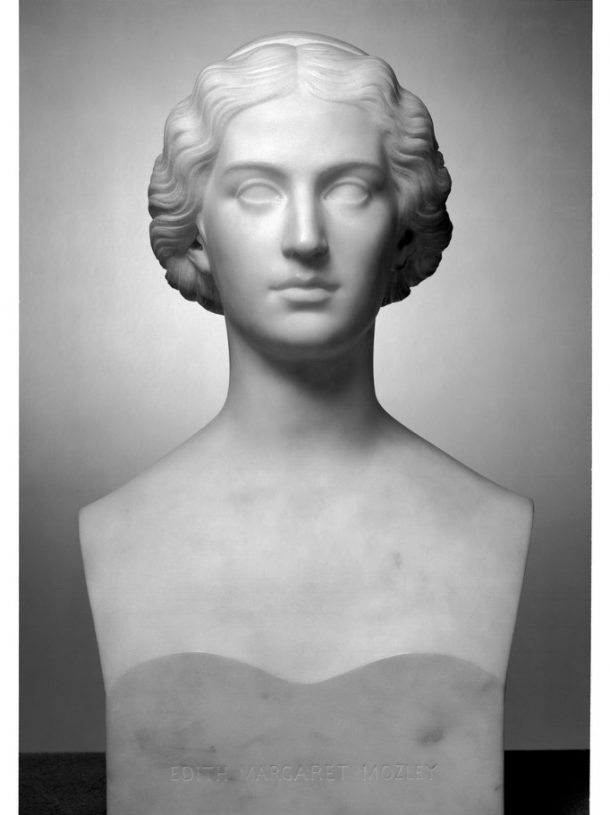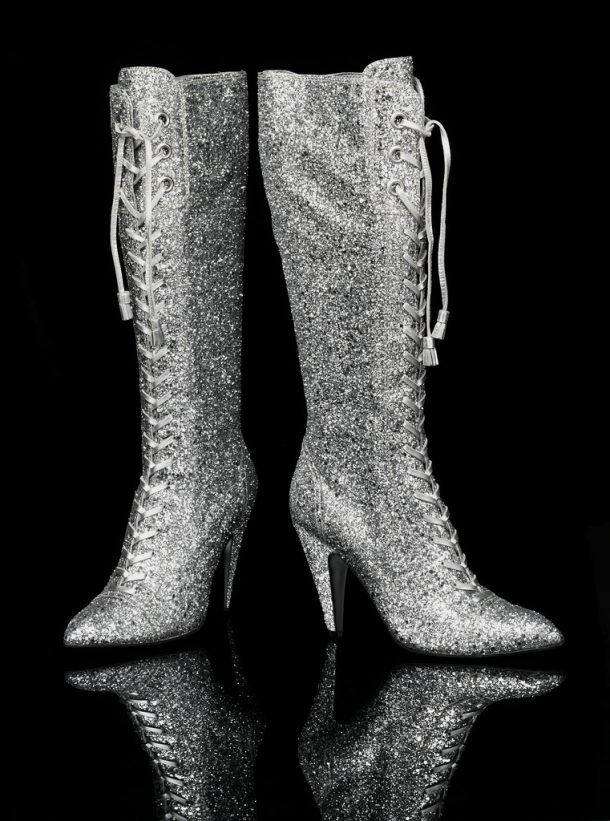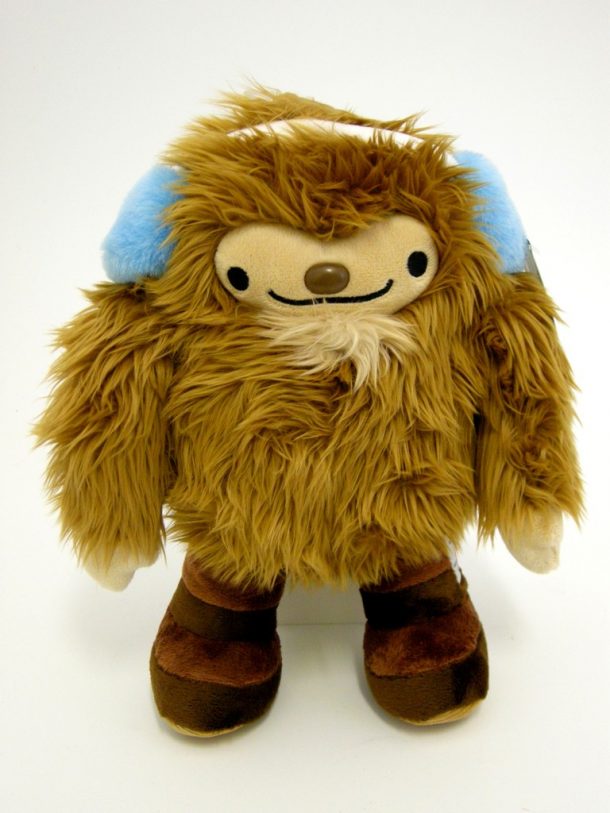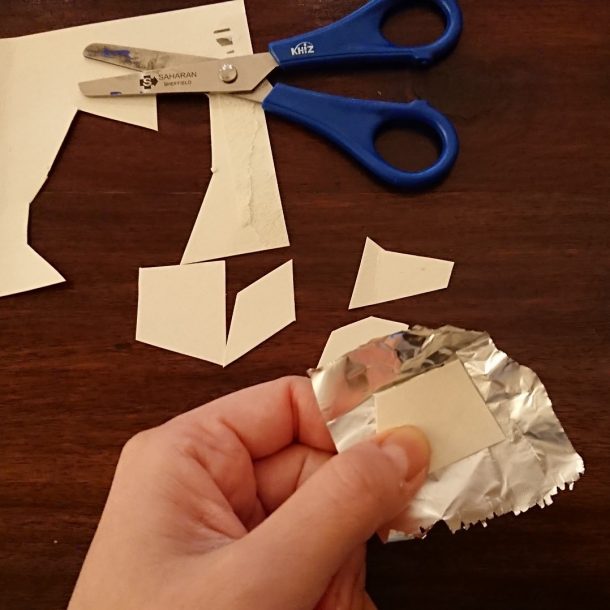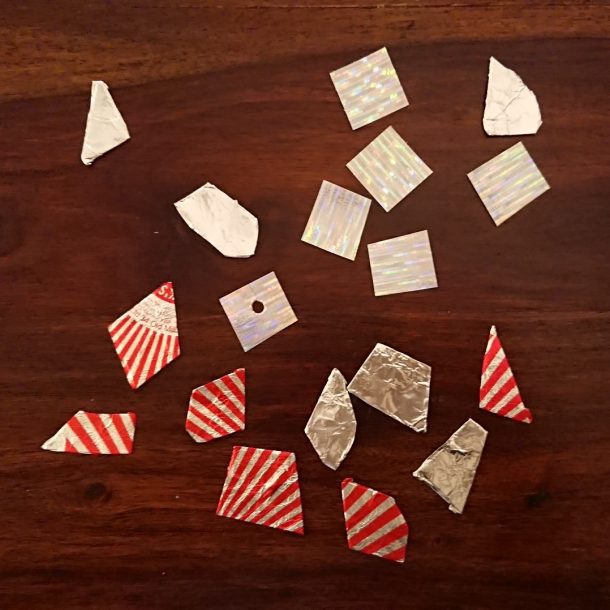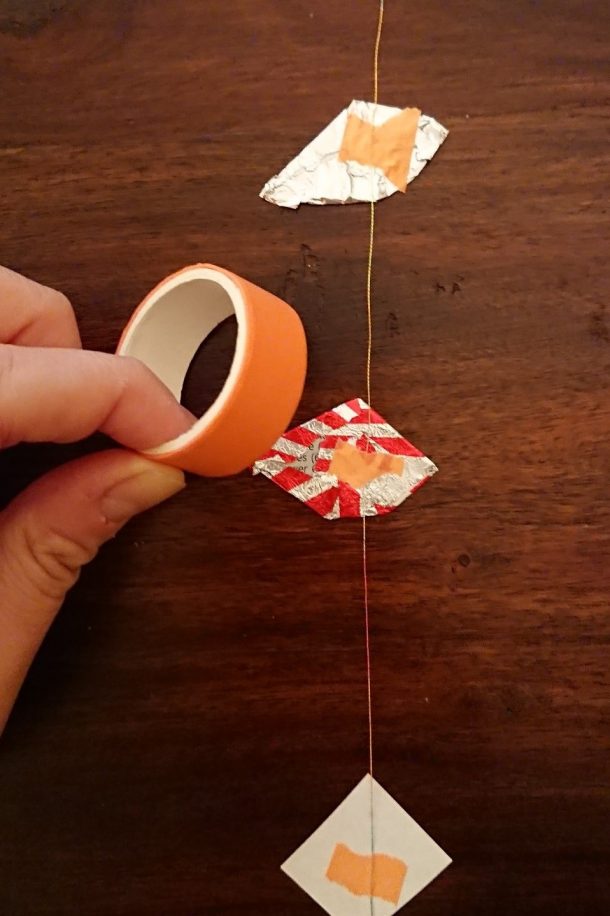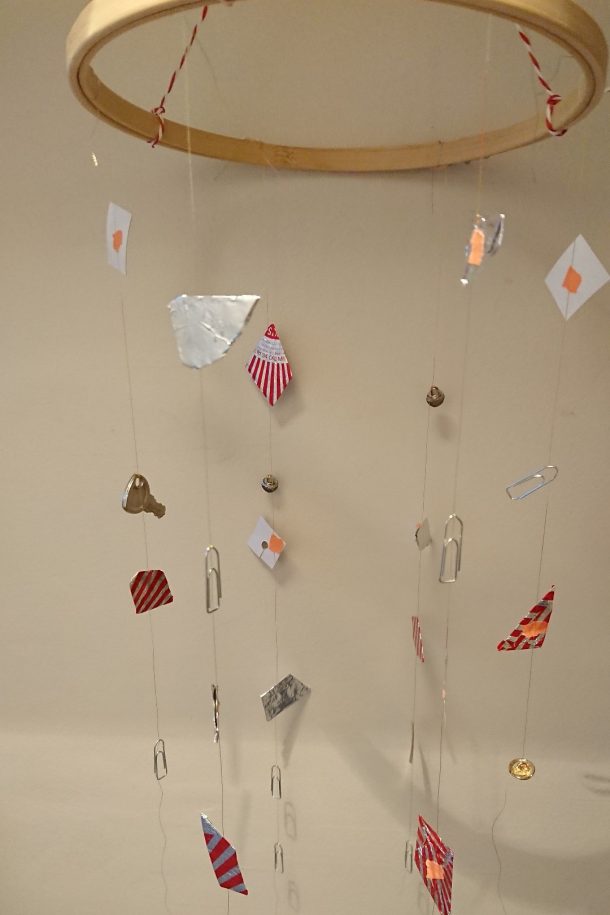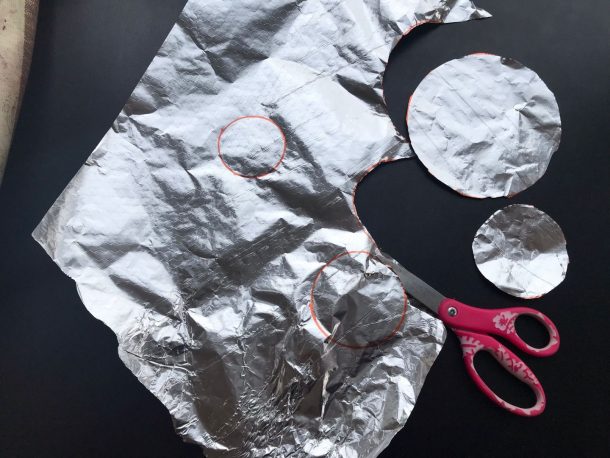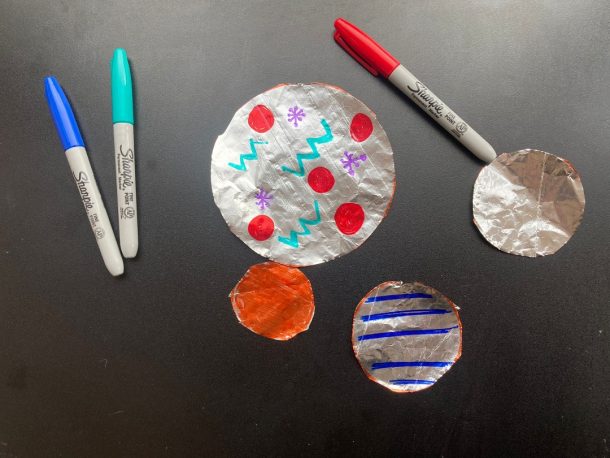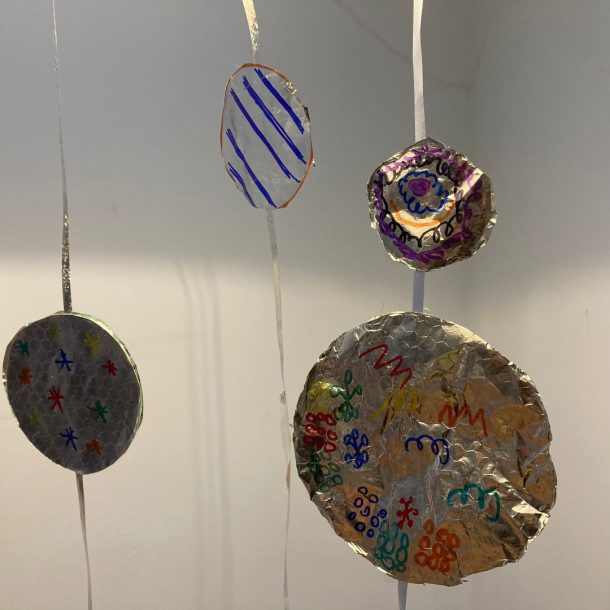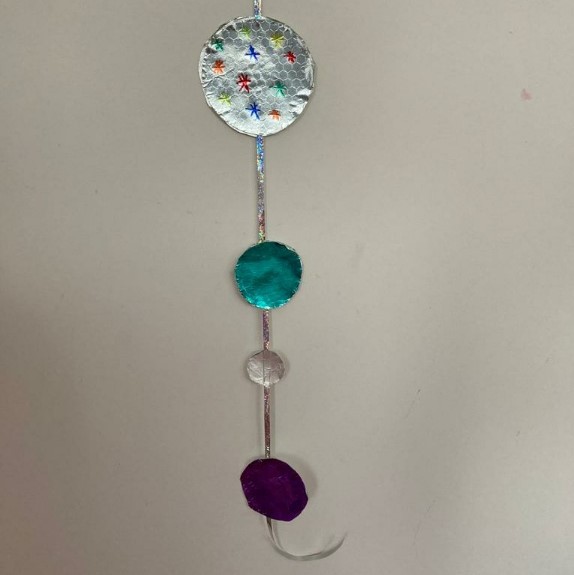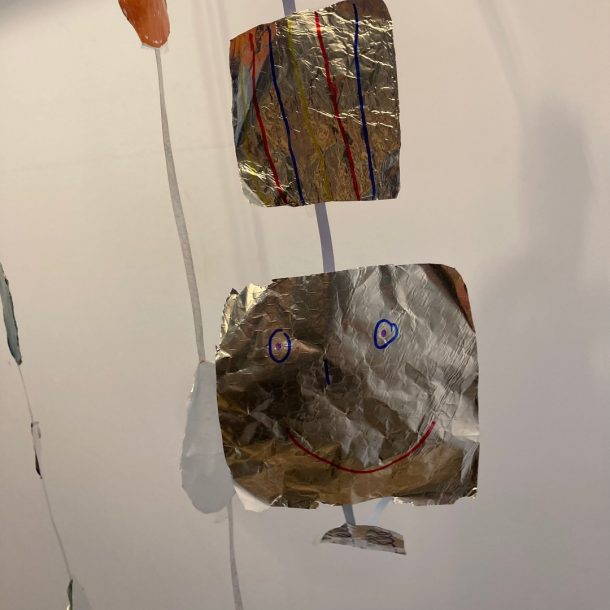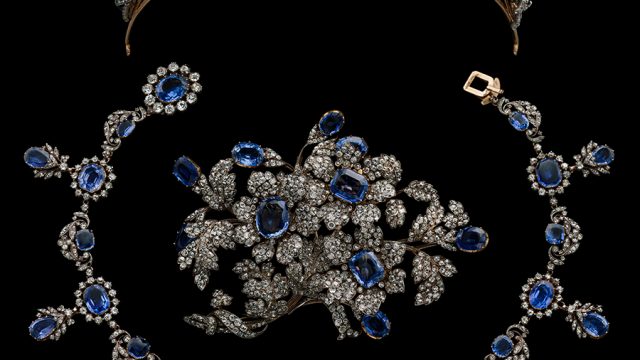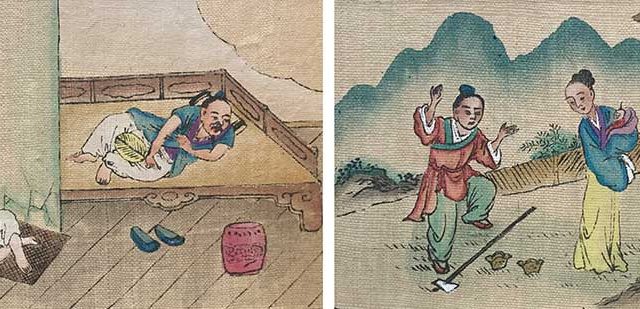When we open Young V&A in 2023, there will be a sensory, collections-rich space in the new Play Gallery for our youngest visitors – inviting them to explore texture, colour and sound through play.
In preparation, the Young V&A team have been playing with families who visit the Ocean Children and Families Centre in Tower Hamlets, London. Our Sensory Play Workshop for 0 – 3 year olds invites children and families to touch, and play with, different materials. The design company Play Build Play designed a bespoke play kit with loose parts with different textures found in the new museum, everything from fuzzy and bumpy, to shiny and smooth.
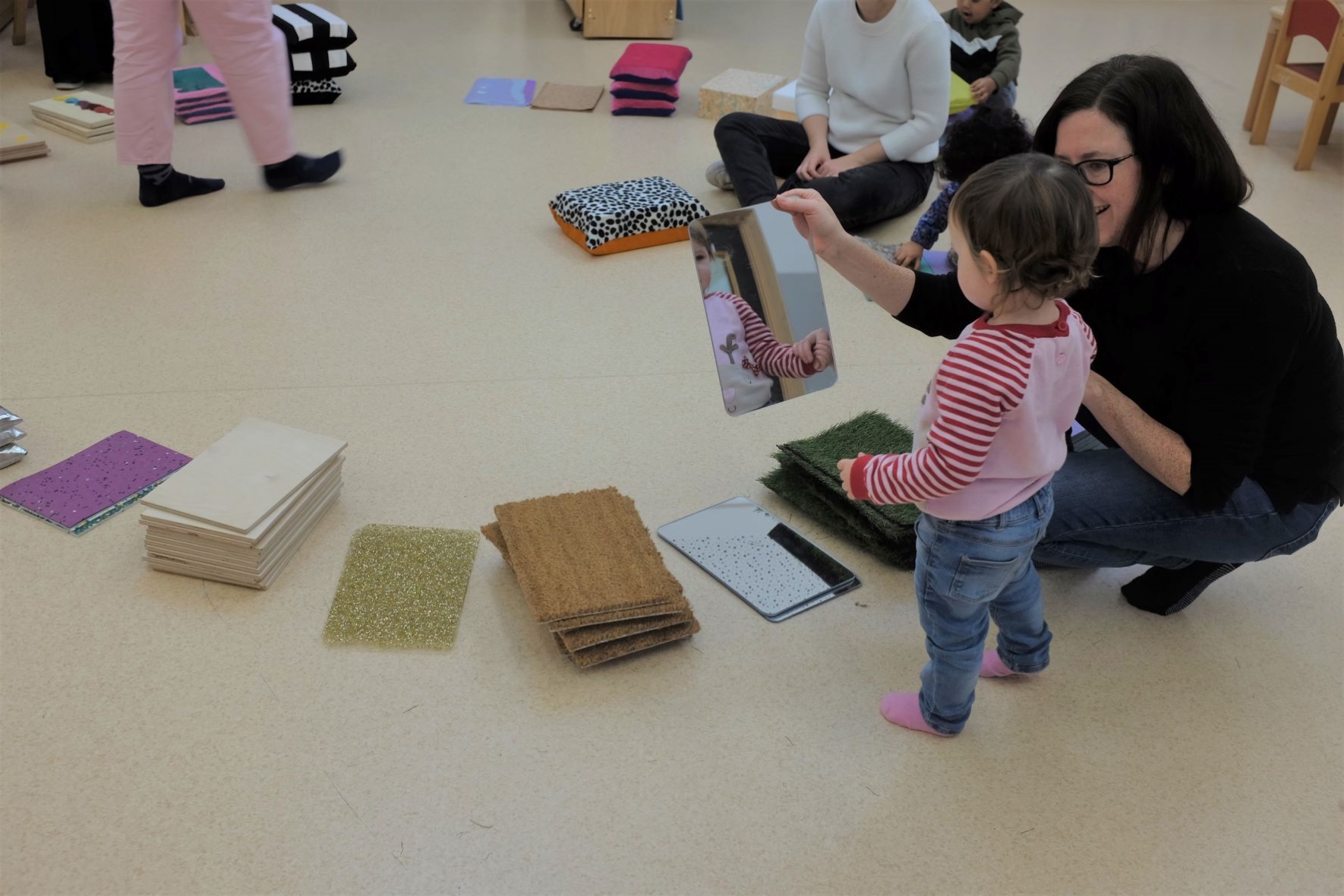
Introducing Play Build Play
Play Build Play are Eva Freeman and James Sale. They design environments with people, especially very young children. Eva and James often play with the children during their design process. They use materials such as cardboard tubes or foam blocks instead of things that are designed for playing, such as toys.
Play Build Play explained why:
The sensory world is all around us; we are always surrounded by amazing materials hidden in plain sight. When we get older, it can become hard to notice this. But young children experience spaces and objects very differently, using their whole body to understand texture, colour and pattern first before discovering any intended use or purpose.
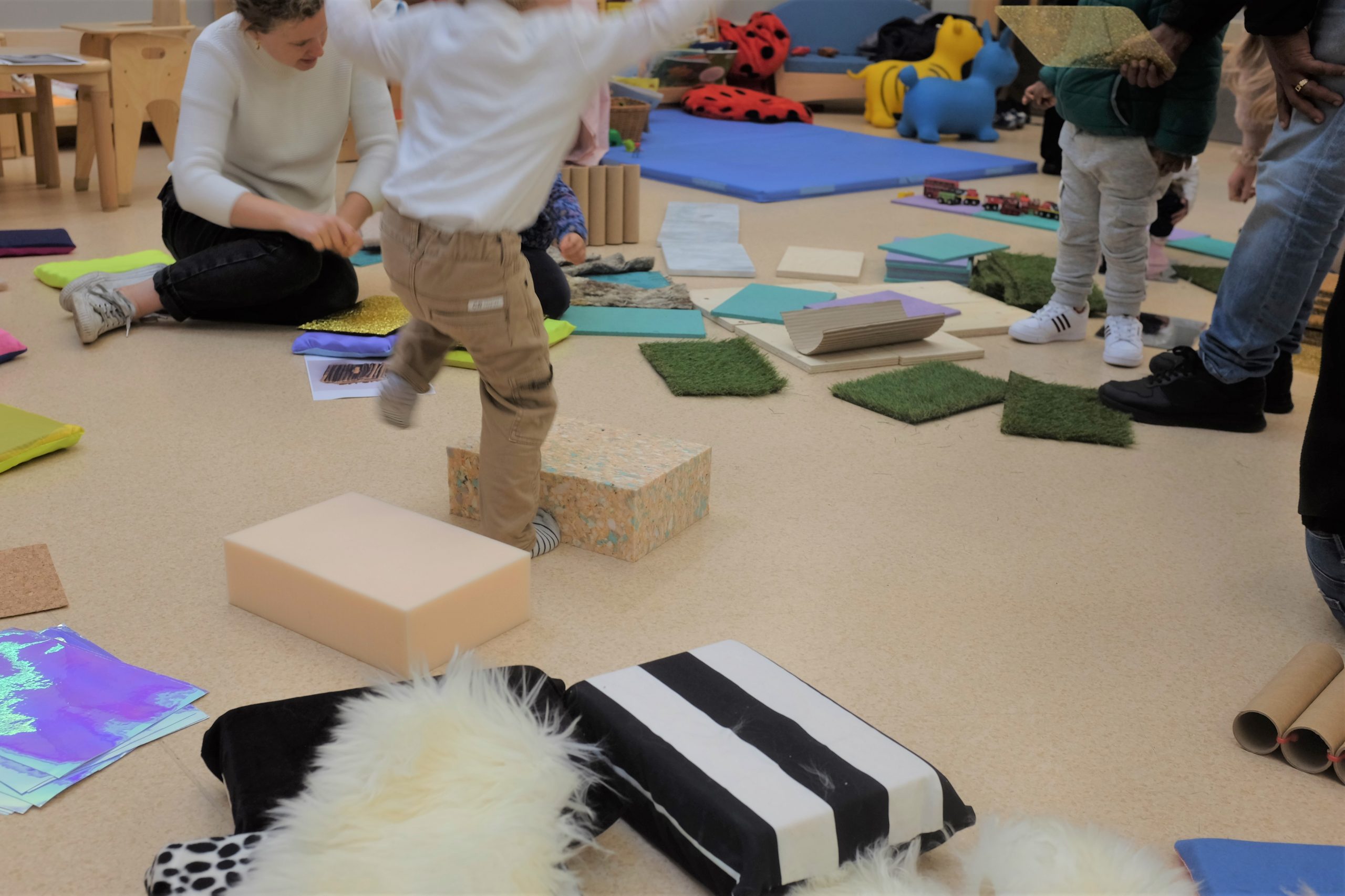
Inspired by the V&A collection
Activities recommended for 7+ years old
If you’re too old to attend our Sensory Play Workshop for 0 – 3 years old, don’t worry! Exploring different textures can still be fun when you’re older. It also helps our creative brain and encourages us to see the world like an artist. And the museum is a great place to find many textures.
Below are some of the objects in the V&A collection. They will all be displayed in the new Play Gallery because of their interesting textures.
If you were able to touch these objects, how do you think they would feel?
The bust sculpture is made of marble. Would it be smooth, or rough, to touch? Do you think it feels warm or cold?
This pair of boots is covered in glitter. How would you describe their texture – sparkly, or maybe glittery?
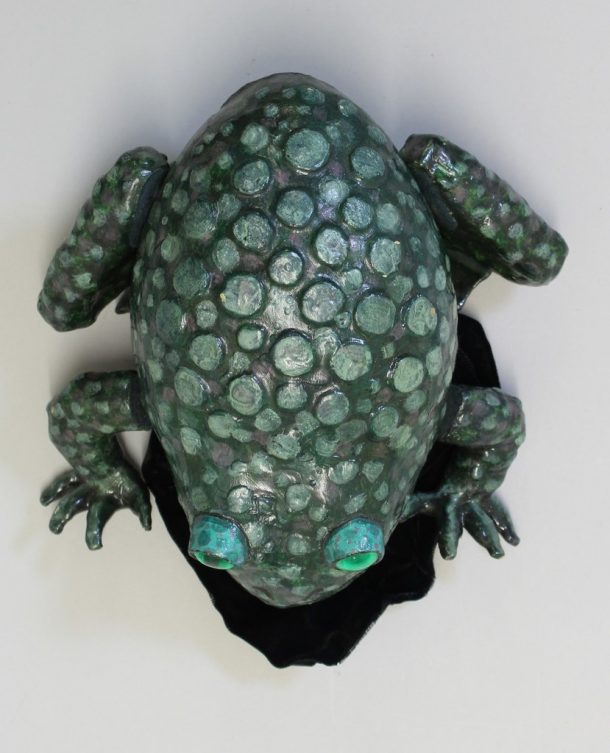
What about these objects? These two figures, a big foot, and a frog, have two very different textures.
If you look closely at things around you, you may find many more different textures than you think.
Let’s explore shiny and sparkly things at home
What textures can you find at home? Let’s brighten our winter days by collecting shiny and sparkly things at home. Grab a tray or a box, and begin your treasure hunt.
How many shiny or sparkly things can you find at home?
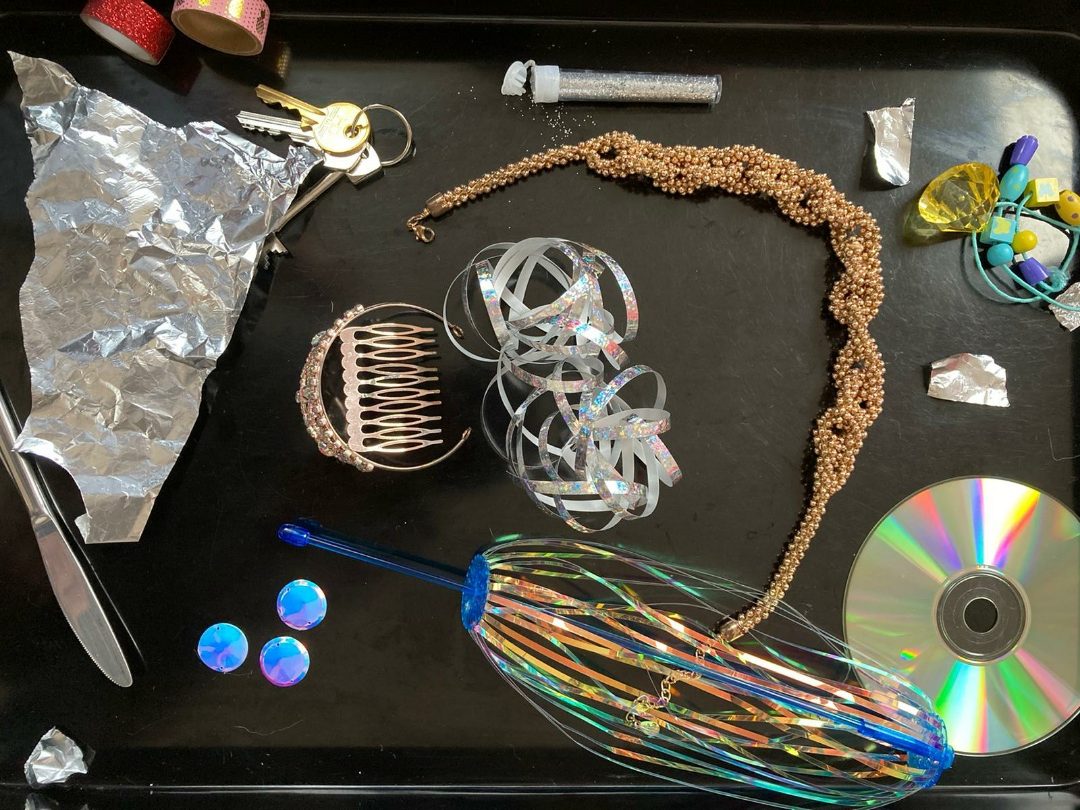
When you collect them, explore the texture more closely by asking these questions to yourself.
- How do they feel when you touch them? Do some objects have similar textures to touch, or different?
- Do they make a sound when you touch them? What sound do they make (crunching, clattering…)?
- What colours are they? Do they change colour or look different when you move them around in your hands?
Now, let’s make something out of shiny and sparkly things.
Sparkly mobile making
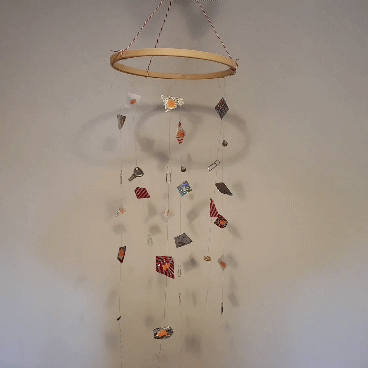
Some things you found at home may be from the recycling bin, such as bottle caps or pieces of tin foil. You can make a mobile to decorate your home using these.
You will need: shiny or sparkly small things found at home (such as tin foil, bottle caps, old DVDs etc.), tape, string, and scissors.
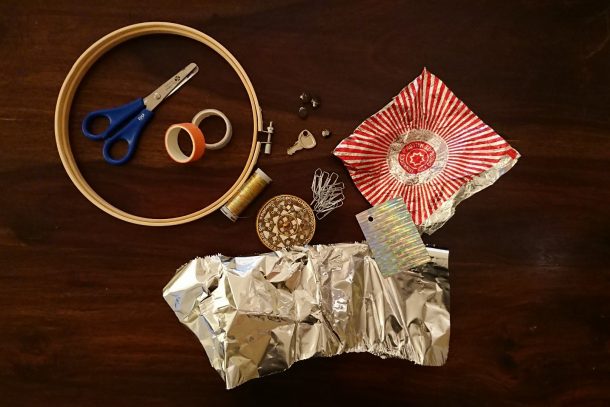
Small shiny things can be used as the parts for your mobile. Small keys, paperclips or buttons that your adults are happy for you to use will work well. If you find some tin foil or sweet wrappers that are shiny, you can make small parts by cutting them into shapes.
Attach the shiny parts to pieces of string using tape. Once we have made some pieces of string with shiny parts attached, we can then put them on an embroidery hoop to make it into a mobile. If you don’t have an embroidery hoop, you can use a cardboard sheet cut into a circle, and attach the string using tape.
What shapes, colours and materials will your mobile have?
If you enjoyed making things with shiny materials, check here to find out how to make your own kaleidoscope!
Share what you create with us on Instagram (@young.vam) or Twitter (@young_vam).
And don’t forget to sign up to our newsletter to follow the latest news on the development of the Young V&A.
